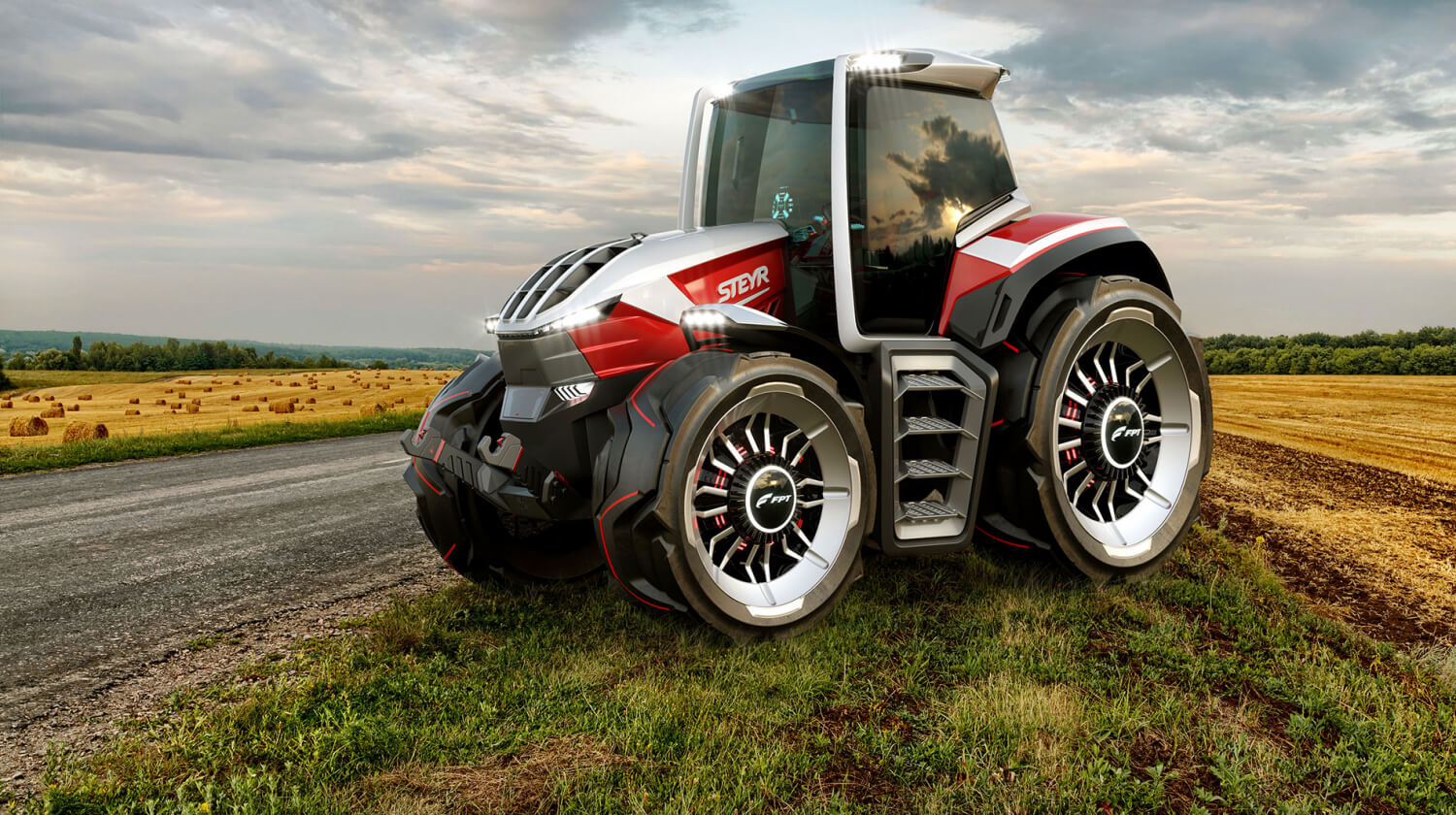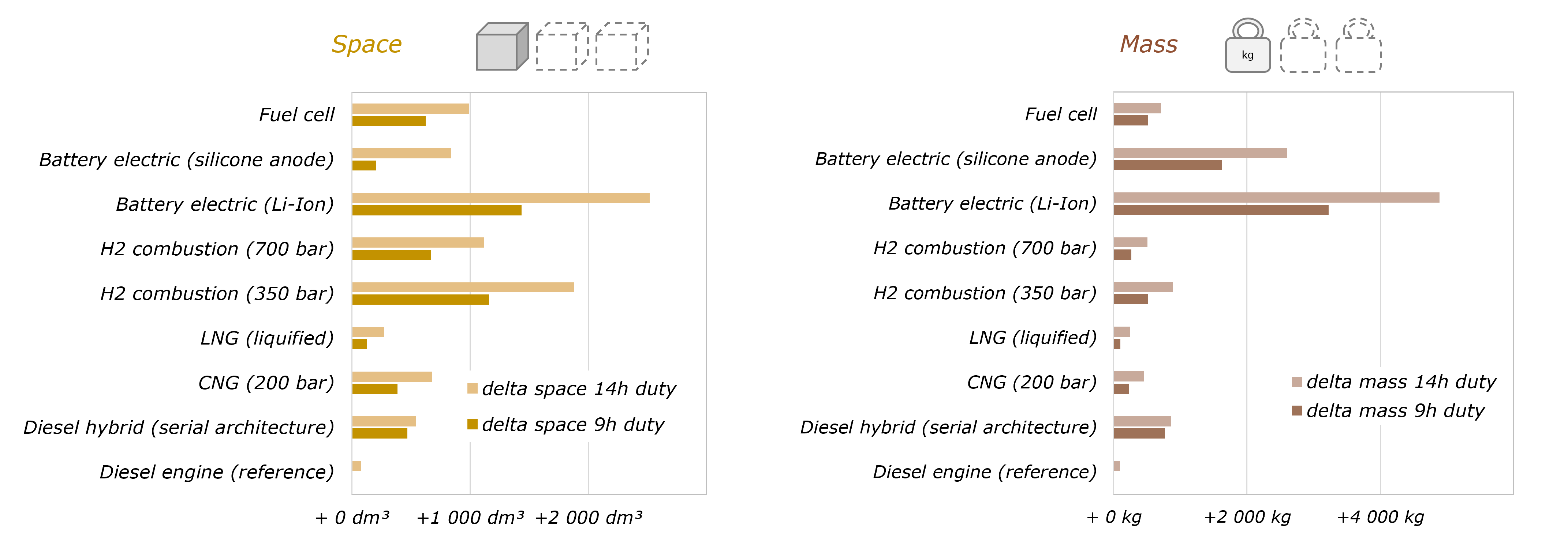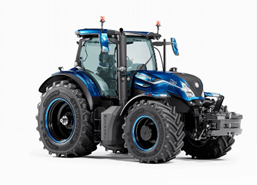The energy efficiency and reducing CO2 emissions is essential to promote sustainable agriculture. The main research areas are automation of tractors and implements, as well as the development and use of new technologies and alternative fuels such as methane, biofuels and synthetic fuels, hydrogen, and battery electric vehicles (BEV). It is becoming clear that advances in energy efficiency and propulsion technology are critical to meeting energy needs while minimizing environmental impact. For CNH, as a large international manufacturer of agricultural machinery, it is crucial to examine all available drive technologies to find more efficient and environmentally friendly solutions.
Today’s agricultural machinery is mainly driven by diesel-engines. The advantages are obvious. Diesel offers high energy density and low specific weight. The oxygen needed for combustion is available from the ambient air. Despite a diesel engine efficiency of well below 50 %, the weight and space requirements for the liquid fuel remain acceptable.
One key strategy on the reduction of greenhouse gas emissions (GHG) and polluting emission is the transition to alternative fuels, such as biofuels, synthetic fuels, hydrogen propulsion, and electrification including hybrid systems. This as part of an ecosystem approach that combines machine and "fuel" production infrastructure to maximize the impact on GHG specifically. Biofuels are produced from biomass, i.e., livestock, plant or waste that has biological origin. Renewable fuels are produced using wind or solar energy. Drop-in fuels act just like conventional fuels, working in existing vehicles and infrastructure without modifications. Synthetic fuels are liquid fuels made via chemical conversion processes, from various carbon sources like coal, captured carbon dioxide, natural gas or even biogas or biomass.
Criteria in Implementing Alternative Drives on Agricultural Machinery
Several criteria must be considered for the introduction of alternative propulsion systems.
Power and Performance, Run Time, and Operating Range:
One of the primary challenges for off-highway vehicles like tractors is to ensure that they can provide the required power and performance. The demand is different for the various agricultural tasks. The operating time should be comparable to that of today’s Diesel-driven tractors.
Cost and Affordability:
The initial costs of vehicles with alternative drives will be significantly higher than for traditional powertrain systems. This will be a challenge for wide adoption. Operating costs need to be lower, resulting in a lower total cost of ownership (TCO) in the long term.
Infrastructure and Dealer Support:
Refuelling/recharging needs to be possible in the environment where agricultural activities take place. A robust infrastructure network will be crucial to support alternative propulsion systems. Additionally, the local dealers need to provide workforce with evolving technologies and customer needs.
Vehicle Architecture:
Shifting to alternative fuels necessitates significant changes to vehicle architecture [1, 2]. Different energy sources and propulsion systems often require substantial modifications to the vehicle layout. These changes address technical considerations (packaging, new thermal management systems), alongside aiming to enhance performance, efficiency, and sustainability.
Durability and Reliability:
Off-highway vehicles, particularly agricultural tractors, operate in demanding environments and endure heavy loads. Maintaining the durability and reliability of alternative drive systems in such conditions poses a significant challenge for manufacturers. Essential components like batteries or fuel cells must endure usage and deliver consistent performance over prolonged durations. Hybrid/electric solutions play a crucial role in the development of new business and maintenance models.
Regulatory Compliance:
Manufacturers of off-highway vehicles face a tough challenge: complying with stricter emission rules while keeping vehicle performance up to par. This balancing act requires constant development and adjustments to adapt to evolving regulations. It's important to note that only full battery and fuel cell electric tractors achieve "zero emission" status (considering emissions throughout the entire process, from fuel source to vehicle operation).
Comparing space requirements and weight
In a simple evaluation the volumetric and gravimetric demand of a tractor with an average power-requirement of 54 kW (according to the DLG-Powermix cycles) assuming a runtime of 9 hour and 14 hours without refuelling, were calculated (figure 1).



